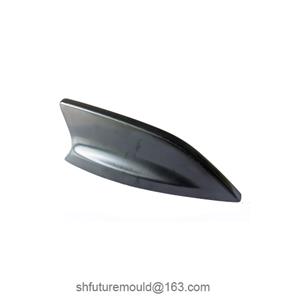Maintenance of Automotive Interior Injection Molds
The maintenance of automotive interior injection molds is crucial for ensuring product quality, improving production efficiency, and extending mold lifespan. Effective maintenance minimizes mold failures and reduces production costs.
1. Daily Maintenance
Daily maintenance is usually performed by operators during production and includes the following tasks:
Cleaning the Mold Surface
After each production run, remove any remaining plastic, grease, dust, or other residues from the mold cavity.
Use compressed air, soft cloths, or mold-cleaning agents to clean the surface. Avoid using hard tools that may scratch the cavity.
Inspecting Mold Surfaces and Components
Check the cavity, core, and parting surfaces for damage or wear.
Inspect moving parts such as ejector pins, sliders, and lifters for smooth operation, and apply lubricants as needed.
Rust Prevention
After production stops, especially in high-humidity environments, spray rust inhibitors on the cavity surface to prevent corrosion.
Store molds in a dry, ventilated environment to avoid moisture damage.
2. Periodic Maintenance
Periodic maintenance involves more comprehensive inspection and upkeep, typically carried out by skilled technicians. Tasks include:
Inspection and Cleaning of Mold Components
Fully disassemble the mold and inspect the cavity, core, runner system, and cooling system.
Remove any residue or blockages from the runner system to ensure smooth melt flow.
Clean cooling channels to prevent scale buildup that could affect cooling efficiency.
Lubrication and Maintenance
Clean and lubricate moving components such as ejector pins, sliders, guide pins, and bushings to reduce wear.
Replace severely worn parts to ensure proper mold operation.
Inspection of Parting Surfaces and Venting Grooves
Check for wear or dents on the parting surfaces and repair as needed.
Clean venting grooves to ensure effective gas venting and prevent defects in molded products.
Repairing Surface Damage
Polish or treat scratches and dents on the cavity or core surfaces to maintain product quality.
Checking Mold Alignment
Inspect the mold for proper alignment, closure, and clamping force to prevent flash during production.
3. Troubleshooting and Repair
When mold failures occur, prompt diagnosis and repair are essential to minimize production downtime.
Analyzing the Root Cause
Identify the cause of failures such as product defects, ejection issues, or demolding difficulties.
Repairing Damaged Components
Weld or replace worn-out cavities and cores to restore original precision.
Repair or replace damaged ejector pins, sliders, or guide pins.
Correcting Deformations or Misalignments
Inspect for deformation caused by prolonged high pressure and adjust mold precision as needed.
Fix misaligned parting surfaces or jammed sliders to ensure smooth operation.
Resolving Cooling and Runner Issues
Clear blockages in the cooling system to maintain efficient cooling.
Inspect and clean gates and runner systems to restore smooth melt flow.
4. Maintenance Considerations
Standardized Operation
Operate molds according to specified process parameters to prevent damage caused by overloading or temperature abnormalities.
Maintenance Records
Maintain detailed records of each maintenance session, including the time, tasks performed, and mold condition, to facilitate future tracking and management.
Proper Storage
When molds are not in use, clean them thoroughly, apply rust protection, and store them in a dry, ventilated area.
Large molds should be stored on dedicated racks to avoid deformation caused by uneven stress.
Using Suitable Lubricants and Cleaners
Choose lubricants and rust inhibitors that do not react chemically with mold materials, ensuring the surface remains undamaged.
5. Mold Life Management and Preventive Maintenance
Monitoring Mold Lifespan
Regularly evaluate the condition of the mold, monitor wear levels, and predict the remaining service life in advance.
Adopting Protective Measures
Apply surface treatments such as nitriding, chrome plating, or PVD coatings to high-wear areas to prolong mold life.
Managing Spare Parts
Keep essential spare parts, such as ejector pins and sliders, readily available during production to minimize downtime for repairs.




